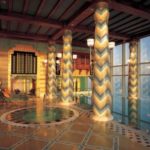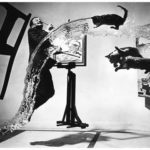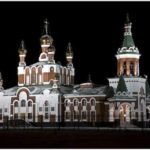A Structure of Centuries: The Museum of Pearl Diving
source: here If you think that Bahrain is not in the lists of must visit places around the globe, then you ought to think again. You might be surprised to learn that Bahrain is regarded as one of the most prominent tourist destinations in the whole of the Middle East region. In fact, it gets more than two million tourists every year. Majority of these visitors are from the nearby Arab states that lie along the Persian Gulf.
However, the government of Bahrain noted an increasing number of tourists from other neighboring countries and those from other continents in the past few years. Without a doubt, this expansion of Bahrain’s tourism sector can be attributed to the growing awareness of the country’s rich cultural and historical heritage. In addition to the Bahrain Grand Prix that many people are waiting for, one of the major reasons why you should pay a visit to this splendid Kingdom is the Museum of Pearl Diving.
The Museum of Pearl Diving is highly regarded as one of the most important historic architectural formations in the Kingdom of Bahrain. Many people note that the structural relevance of this place stems from the fact that it was the first official center for Bahrain Courts. The place was officially inaugurated by the late H.H. Sh. Hamad Bin Essa Al-Khalifa, in October 1937. Al-Khalifa is one of the most distinguished former governors of Bahrain who contributed much to its historical richness.
During its time of inauguration, the building was divided into four important sections, each of which represents the four Supreme Courts, excluding the three Directorates of the country which included the Sunni Waqf (Religious Endowments of the Sunnis); the Jaffaria Waqf (Religious Endowments of the Shiites); and the Minors Estate (Properties of Underage).
Approximately half a century later, the place was then transformed into a Traditional Heritage Center. At that time, the various sections and rooms of the museum were then transformed into exhibition and presentation galleries. These galleries catered to various elaborate displays of the various traditional aspects of the country’s heritage. However, one should note that the space allotted for the Supreme Courtroom did not incur any significant changes. During that period, the Supreme Courts were then composed of a Civil Court, an Appellate Court, and a Criminal Court.
As of now, the Museum is utilized and managed by the Directorate of Archaeology and Heritage. This directorate is considered as one of the chief Directorates of Ministry of Cabinet Affairs and Information. Through its years of existence, this architectural structure has witnessed the gradually changing and evolving structure of not just the government of Bahrain, but the whole social organization of the Kingdom. It is a definite witness of essence to what the country has achieved throughout its long history as a nation.
The Museum of Pearl Diving serves as the place for the transformation of the various components of the laws in the society of Bahrain- from the application of the civil laws to the construction of the various principles for justice and the formation of its legal foundations. Definitely, the museum is considered as something that brings pride to the whole of Bahrain – from its governors to all of its constituents.





